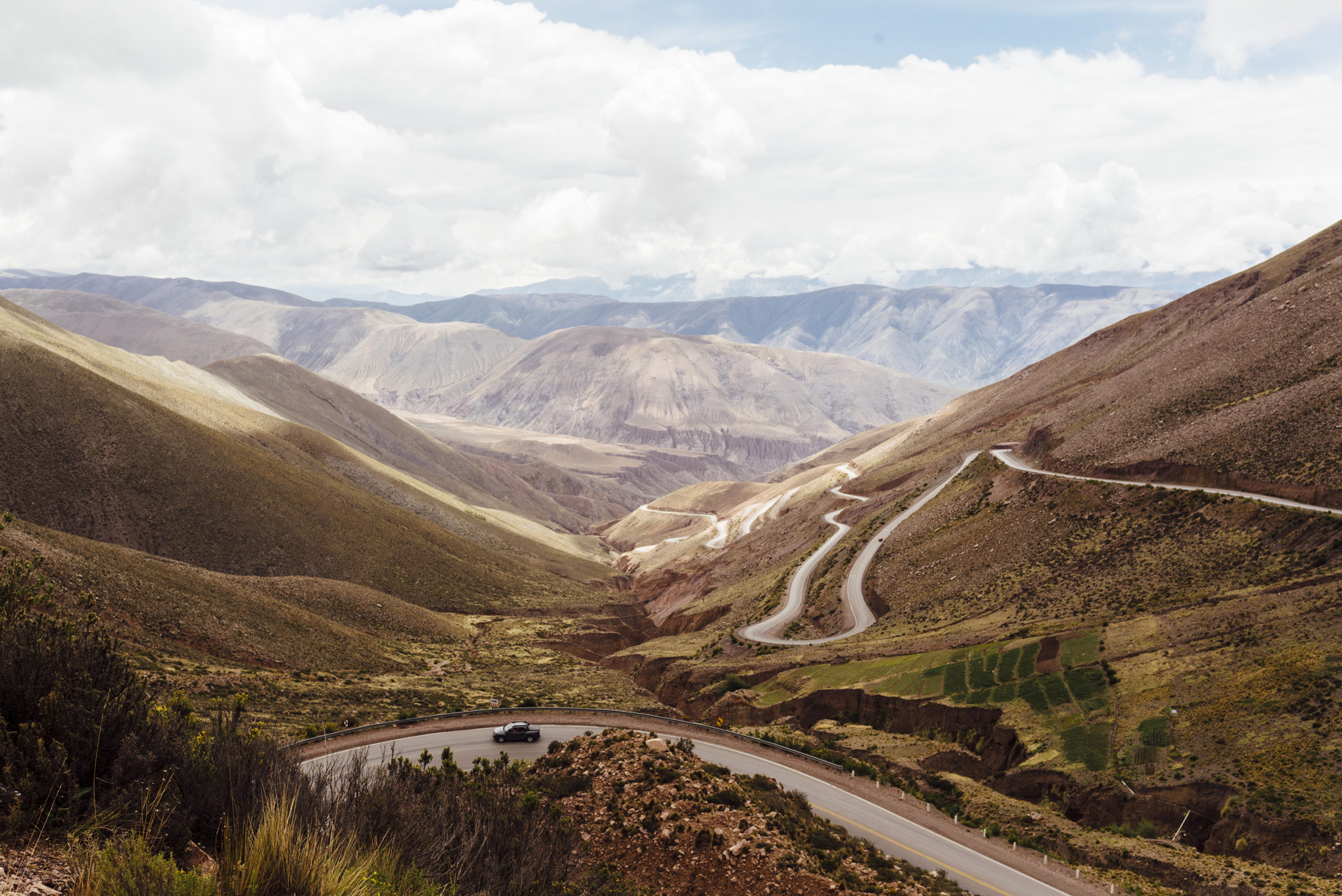Text & images by IJfke Ridgley
Far away from the hip happenings of cosmopolitan Buenos Aires, a city where the Italian-looking residents all look to Europe for inspiration, the northwest corner of Argentina is worlds apart.
Here, the locals are still in touch with the area’s Indigenous cultures, having managed to preserve their traditions for thousands of years. Once home to the southern arm of the Inca empire, the culture in this region echoes that of its Andean neighbors more than its own country of immigrants.
Salta, the capital of its eponymous province, is the jumping-off point for my exploration of the northwest corner of Argentina by car. The drive’s famous roads ring around spectacular scenery, north through the wild landscape of neighboring province Jujuy and south to the vineyards of Cafayate.
A regal remnant of colonial times, Salta is a picturesque city that was founded in 1582 by the Spanish. Its wide streets and tree-lined squares are punctuated by ornate colonial churches and government buildings in pale pink and blood red. Vendors selling bags of giant popped maize and cotton candy line a sleepy park.
I take a cable car to an outlook over the city, and from its final vantage point I can see the outskirts of a town framed by lush, rolling hills where families escape the city for the Yungas, cloud forests, to hike among the bromeliad-laden trees and picnic by waterfalls.
By night, the moody, wood-paneled venues of Salta play host to peñas— traditional song-and-dance folklórico parties—a far cry from the seductive and melancholy tango milongas of Buenos Aires.
It is on charming Balcarce Street, where lit terraces spill from low-slung colonials, that I take a seat in the back corner of a raucous venue. The audience whoops and hollers with the performers, often dressed as gauchos and folk heroes, whose dances combine European and Indigenous influences.
Steaming bowls of locro (a bean and beef stew), corn humitas stuffed with cheese, and baked empanadas are washed down with glasses of local Torrontés wine.
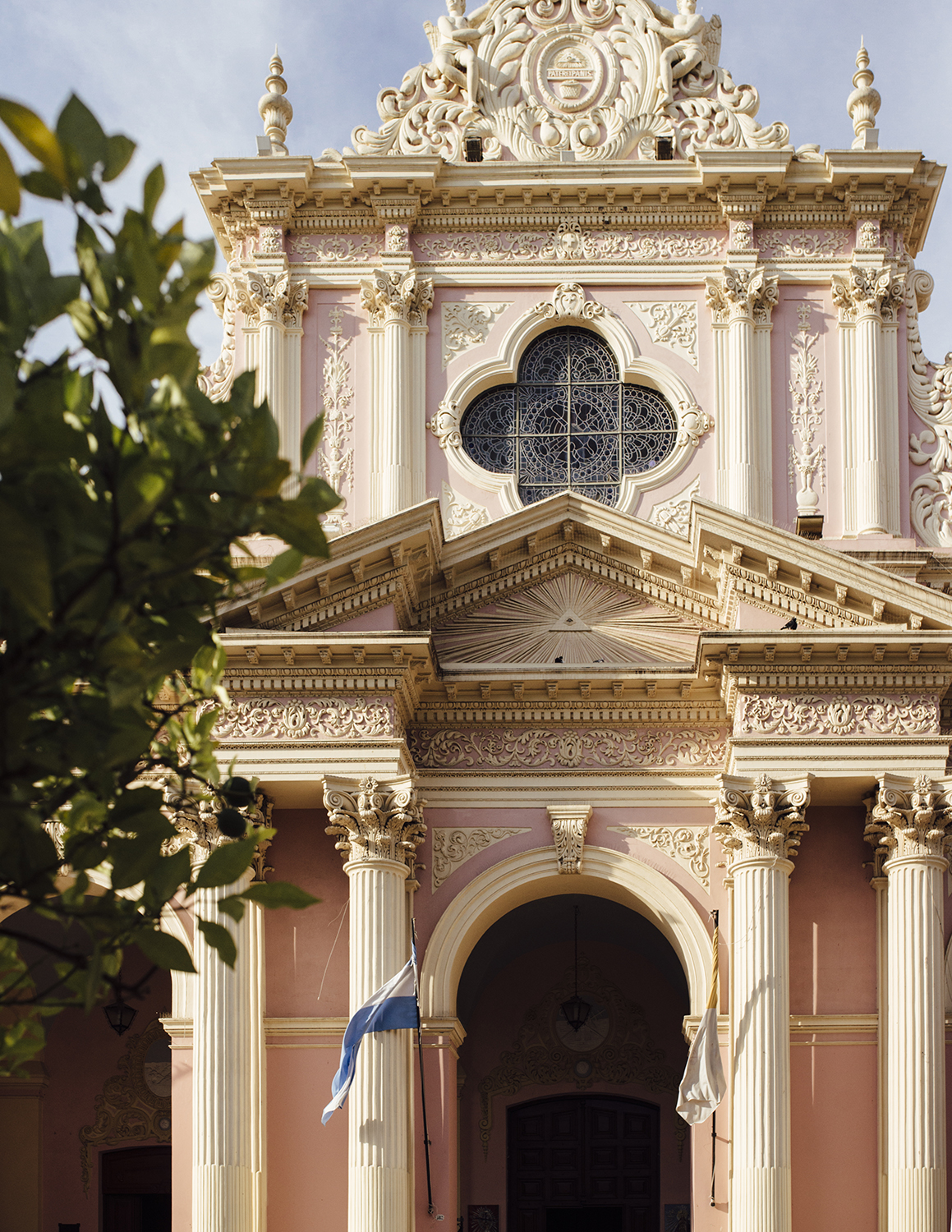
known for its Andean heritage and Spanish colonial architecture.
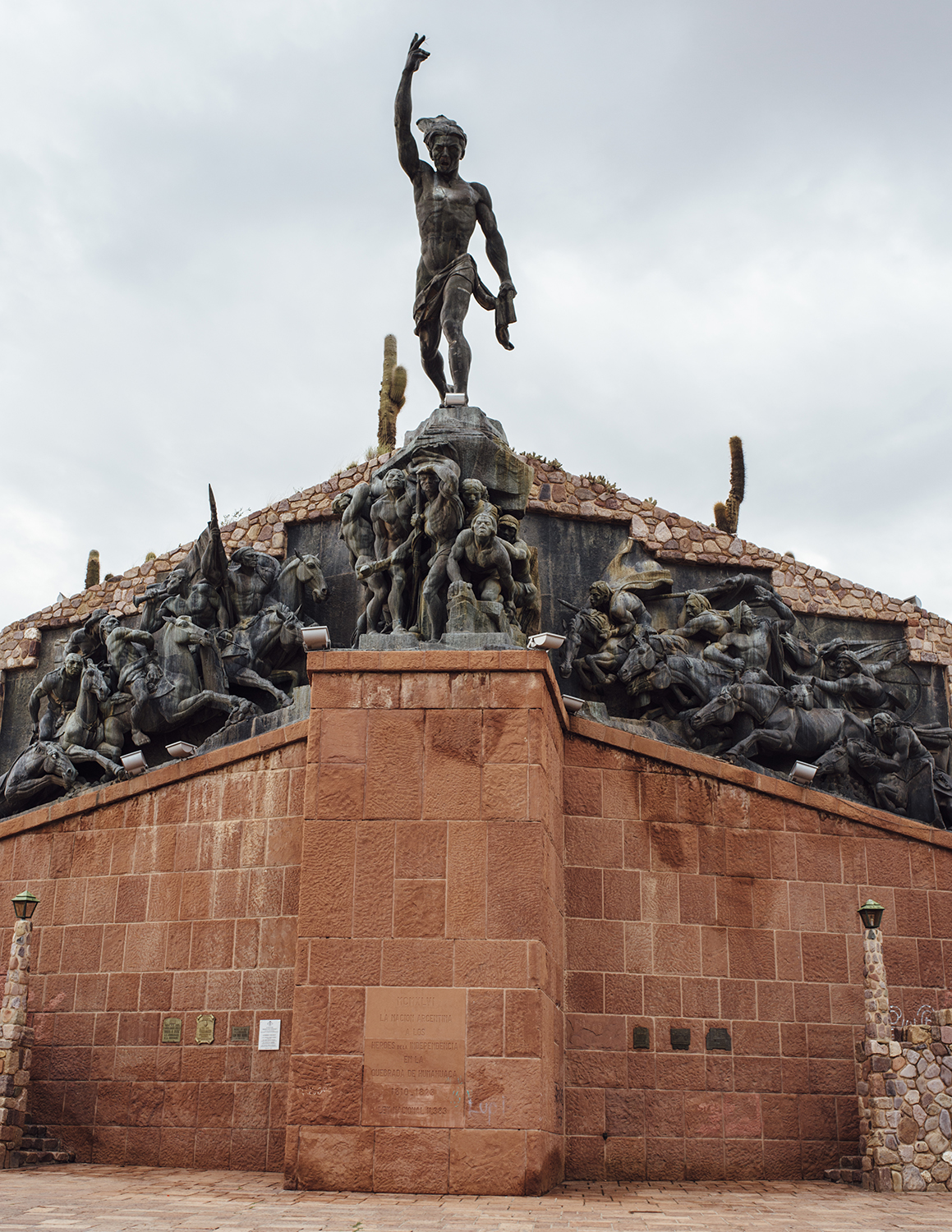
Heading north the next day, I see the green ridges of Salta give way to flat, red dirt and dramatic mountains in the northernmost province of Jujuy.
After a few hours of driving through endlessly arresting scenery, my first stop is the striking town of Purmamarca, where a smattering of adobe houses is framed by the famous seven colored hill, Cerro de los Siete Colores.
Brightly colored textiles spill from a lively market up the road in Tilcara, a cozy village of earthen streets lined with dusty cacti where I pick up an alpaca sweater to fight off the cold of the increased elevation.
If seven colors aren’t enough, the Cerro de los Catorce Colores can be found a few hours north in Humahuaca, a dizzying landscape of triangular peaks in 14 undulating hues of ochre, mauve, and terracotta.
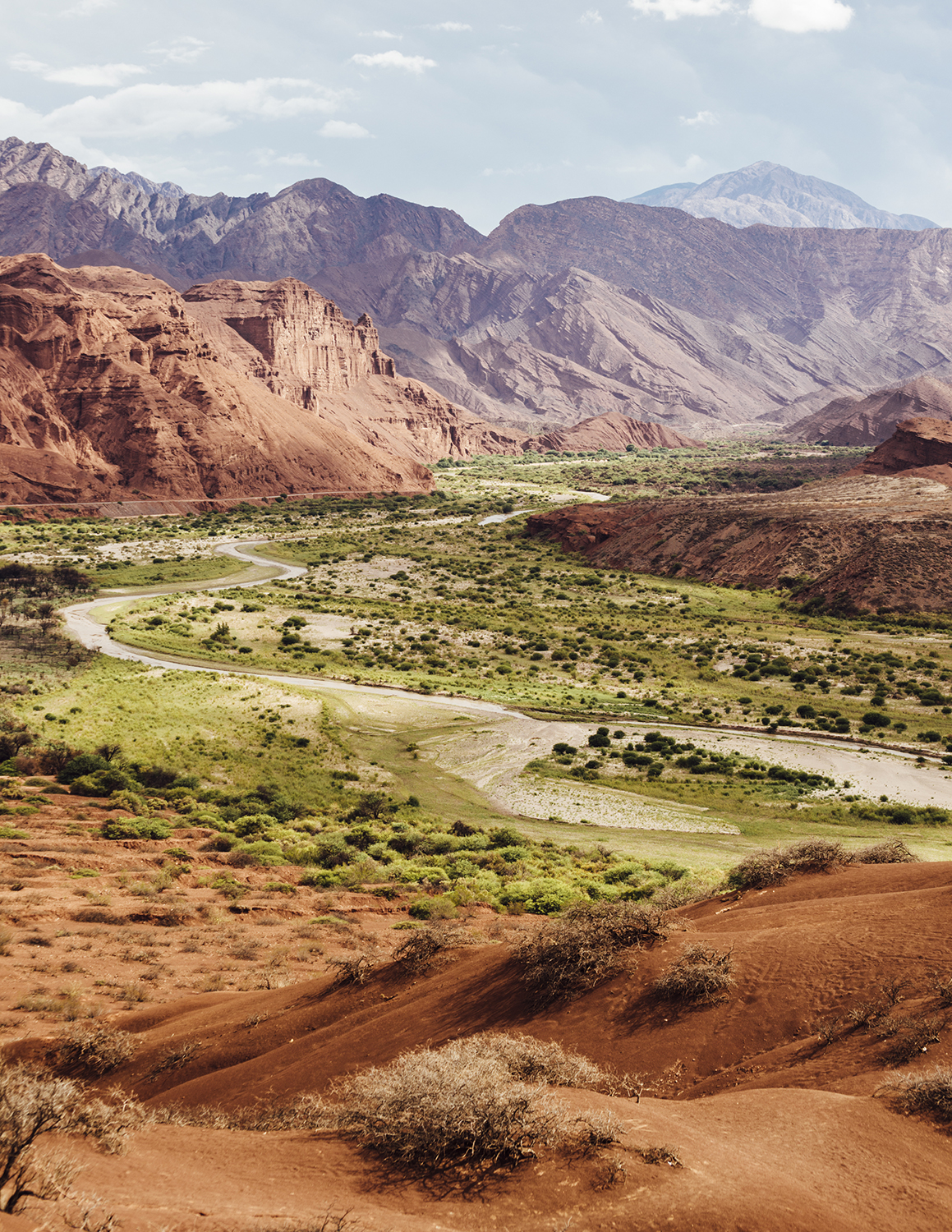
Each turn further north is more dramatic than the last: a picture-show of peaks and valleys and distant llama herds, until the air thins and the terrain flattens in the Puna, the Andean altiplano.
The shift of a vicuña’s thin neck—the llama’s waif-like cousin—is the only movement I see at this 12,000-foot elevation. Bolivia beckons from beyond the border.
Looping back towards Purmamarca I find the impressive Salinas Grandes, a series of salt flats just across the mountain from Chile’s Atacama Desert. Vast stretches of cracked white become a mirror of blue with the seasonal rains.
As the road descends from dizzying heights into the famous Cuesta de Lipán, a zigzagging route across the barren shoulders of the Andes, my eyes burn in the sharp Andean sun.
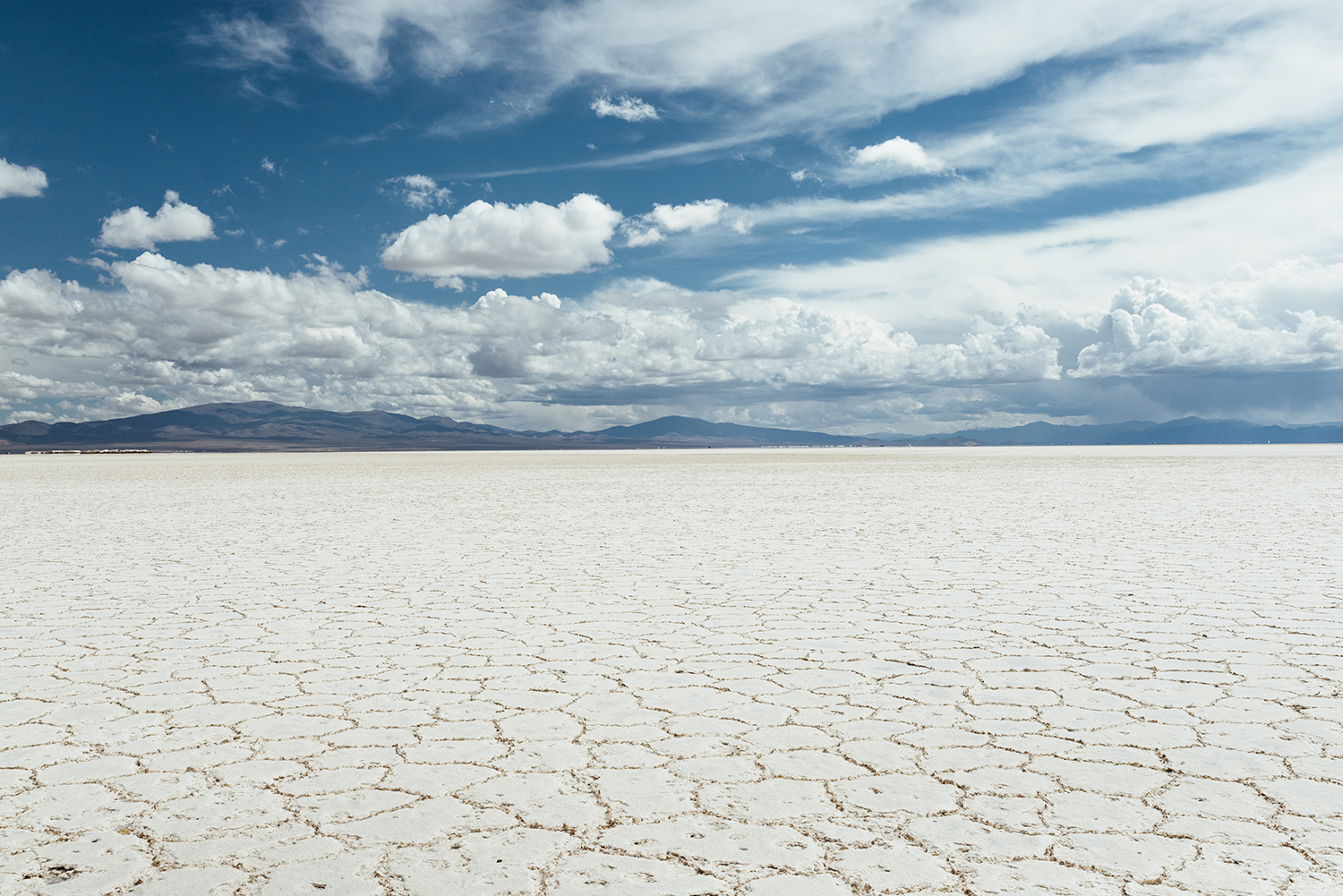
South of Salta, the elevation may be lower, but the sights are no less impressive. The crimson hills that stand at a distance up north now hug the highway, while towers of rock worn by wind, water, and time reflect in the winding rivers.
I pick up a scruffy hitchhiker whose mother had moved to this barren valley 25 years ago from Buenos Aires to start a community of artisans, and drop him off to sell his handmade jewelry at La Garganta del Diablo (The Devil’s Throat), a natural amphitheater carved over time from the red sediment.
Llamas munch on prickly shrubs and the landscape shifts yet again as the road enters into Cafayate, a stately colonial town quickly earning its place in the viticulture scene.
Large estancias (ranches) turned the high altitude and low humidity of the Calchaquí Valley into the intense grapes of Torrontés, Tannat, and Malbec, and caught the attention of wine-lovers looking beyond Argentina’s famed Mendoza wine region.
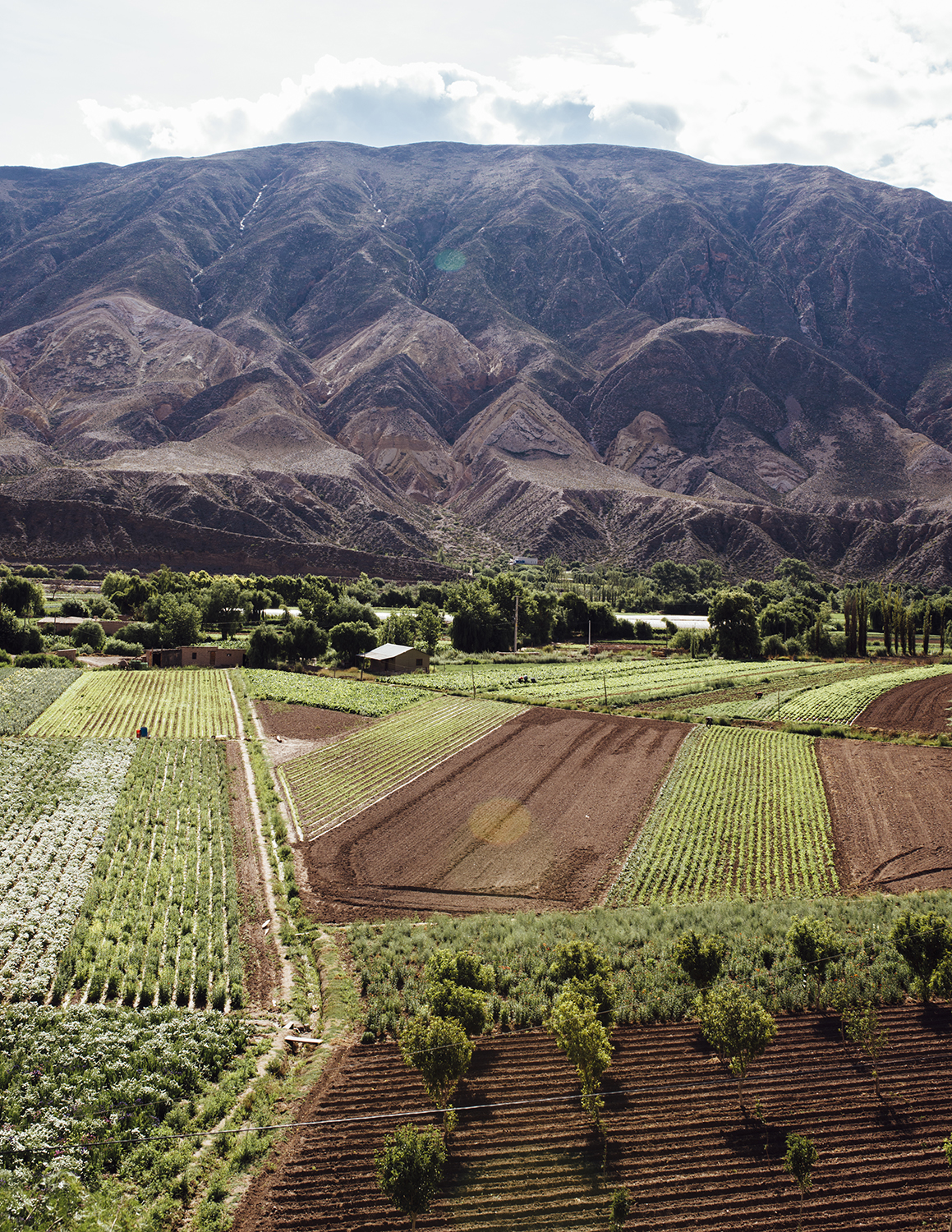
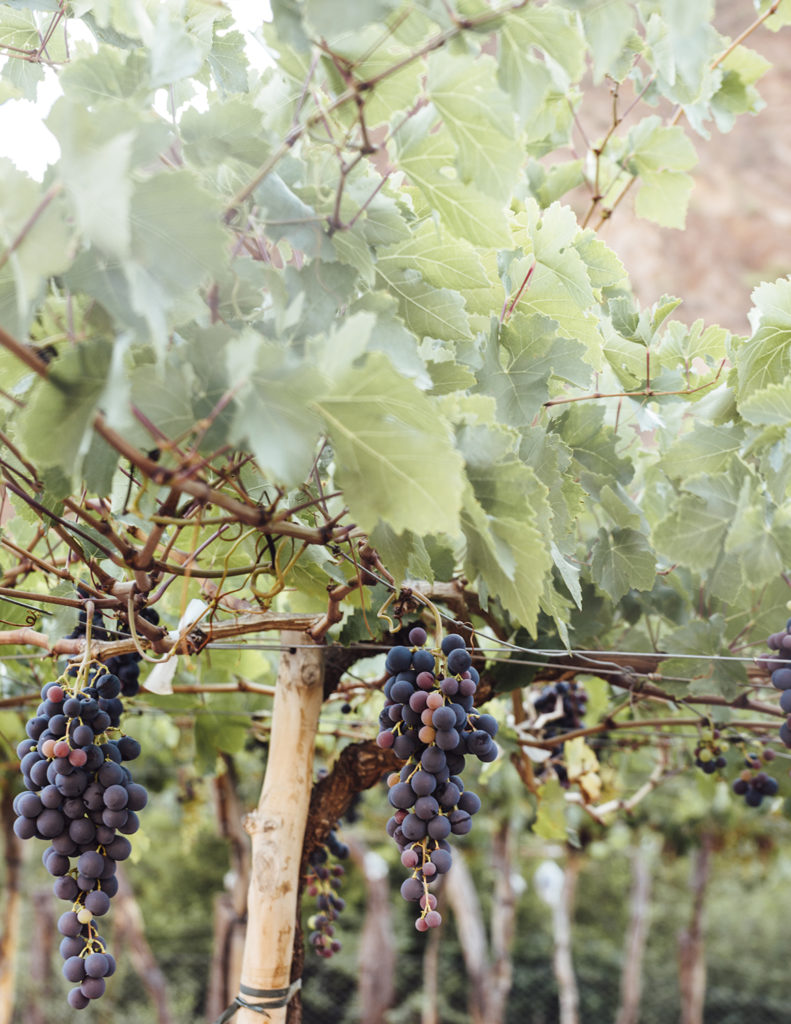
Descendants of the Diaguita people still live in the rocky valleys surrounding Cafayate.
My guide, Mirta, assigned to lead me up a hike to the waterfalls of the Río Colorado, is one of 11 children and lives two hours by foot deep in these mountains.
Together we walk along oases of water flowing between the boulders and cacti. It’s a glimpse into the trek she and her Diaguita family make daily.
I arrive back at the town square as dusk settles over the plaza, the surrounding hills aflame with the first fingers of sunset.
European tourists and visiting Porteños sit next to me at the outdoor terrace where I order an empanada and a glass of wine.
I take a sip of Tannat and taste the earth below.




